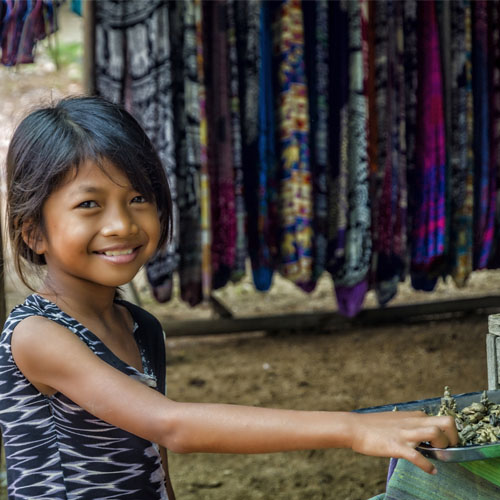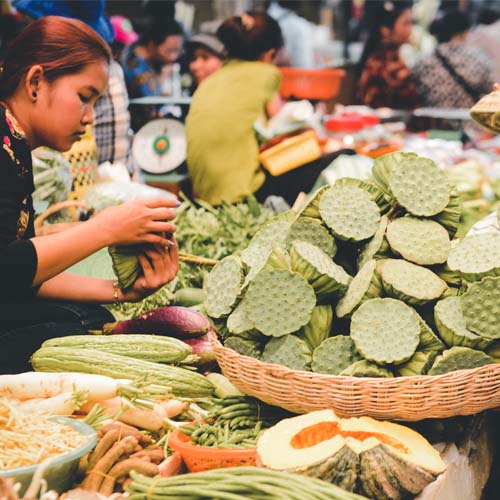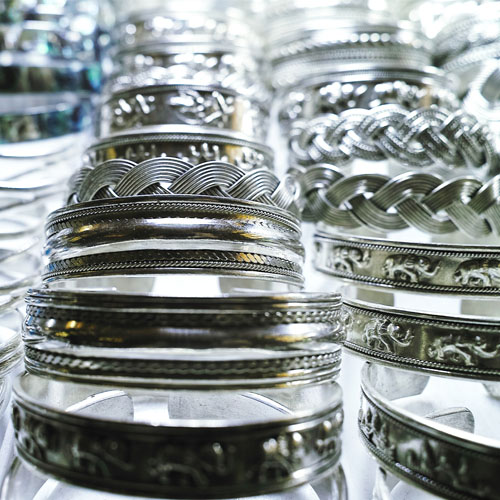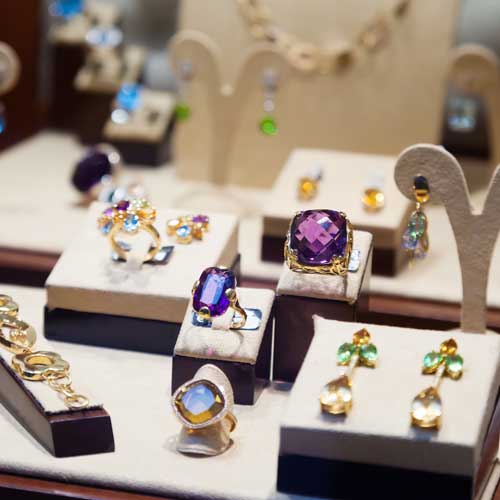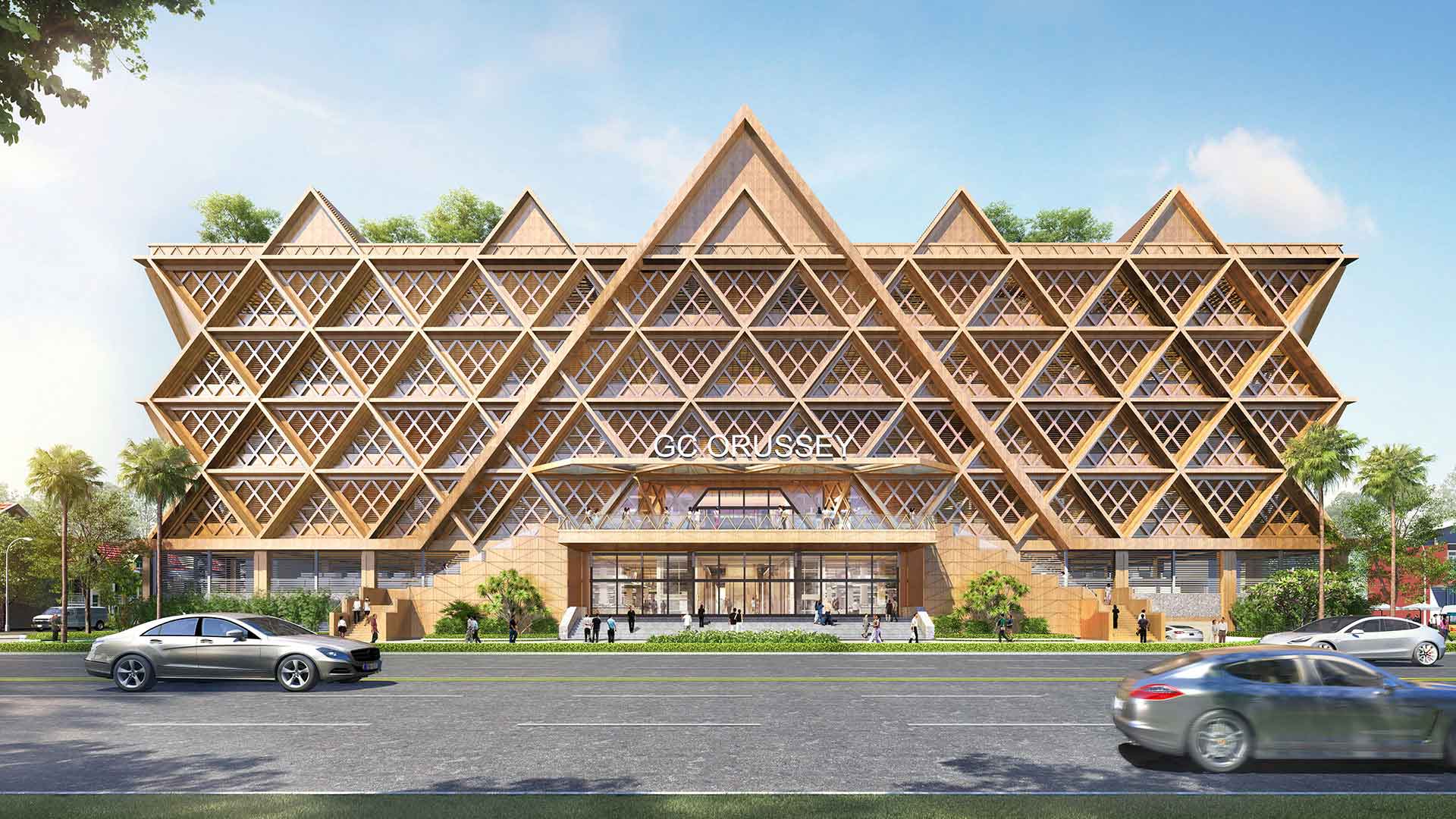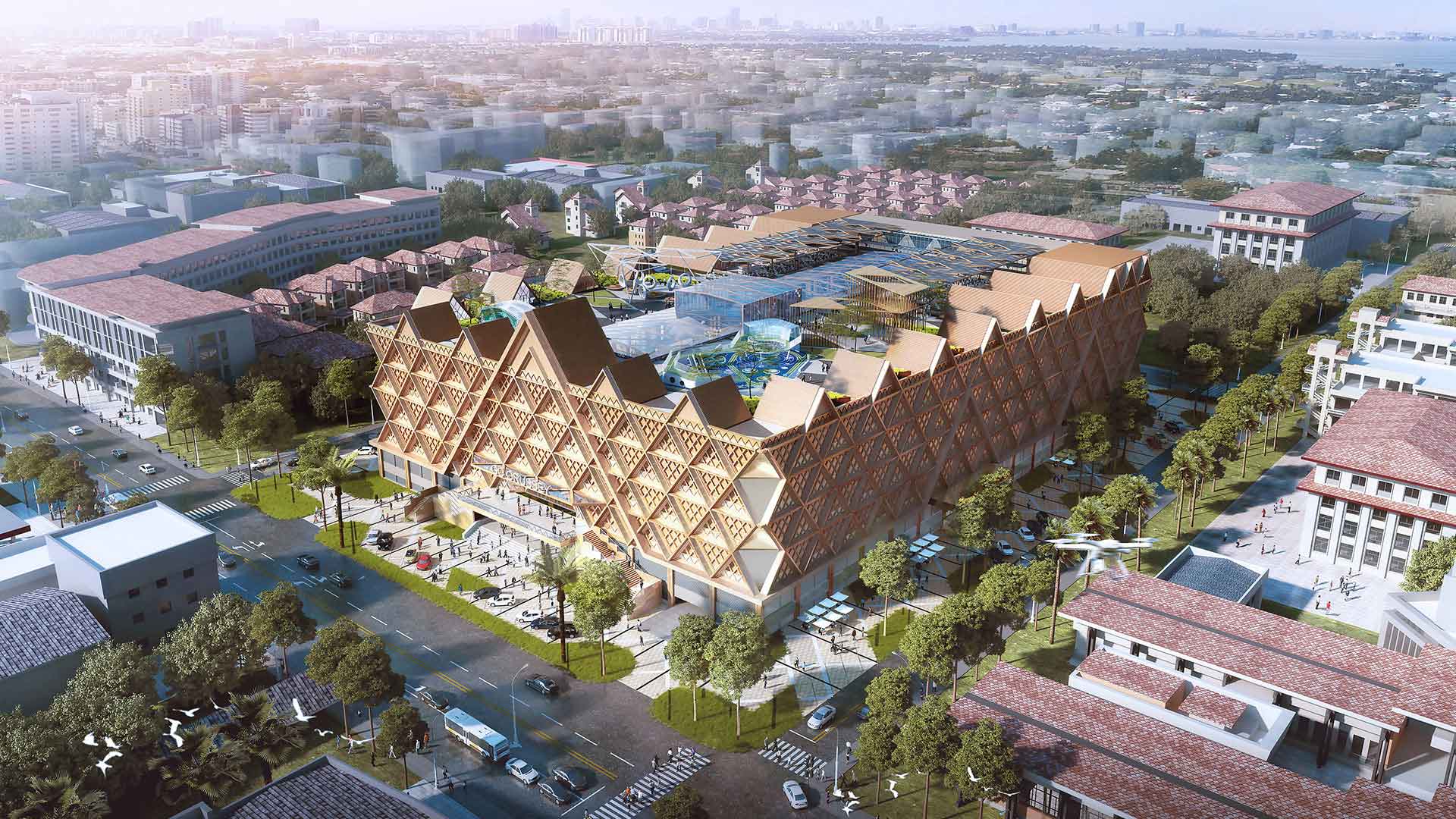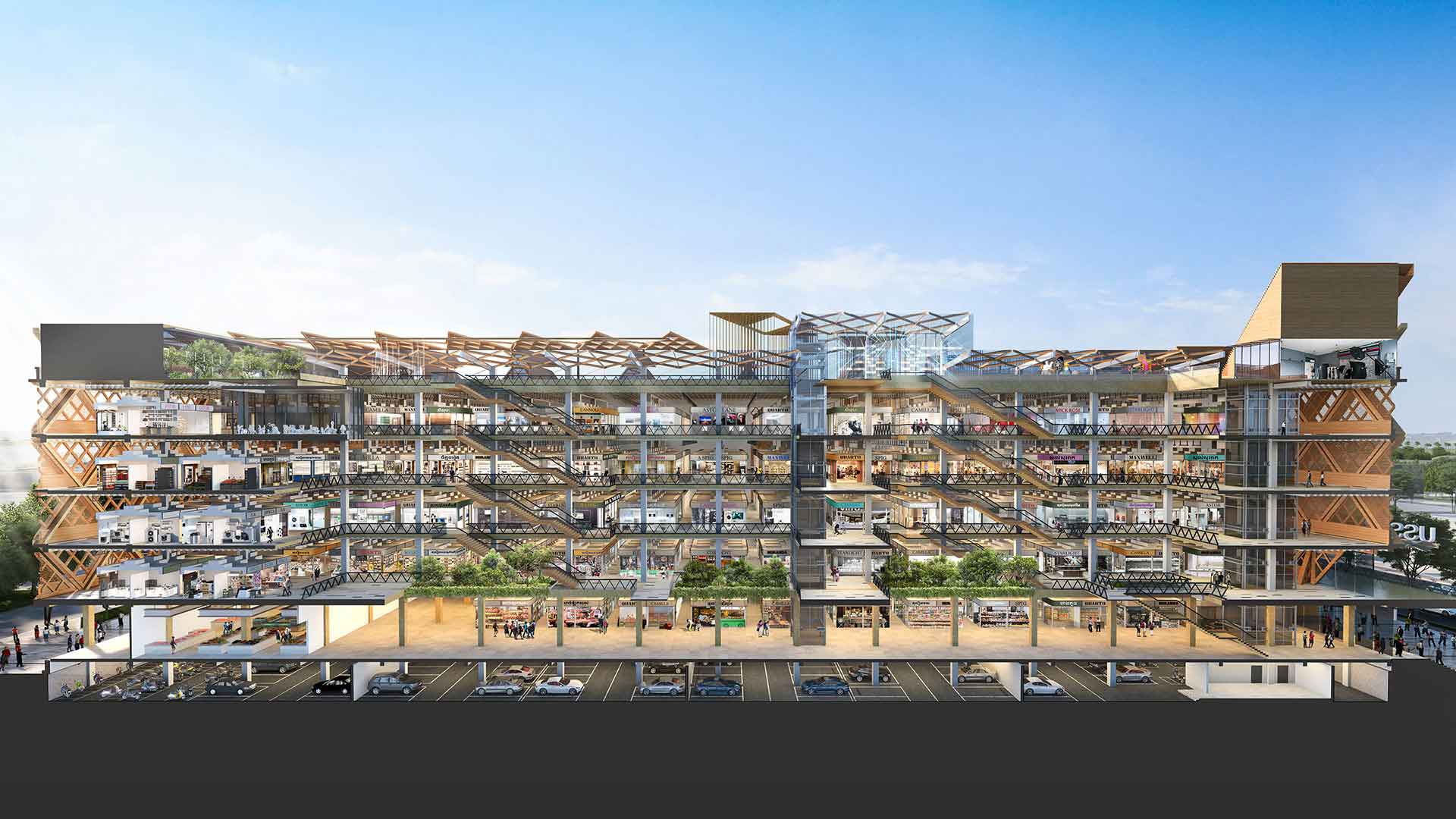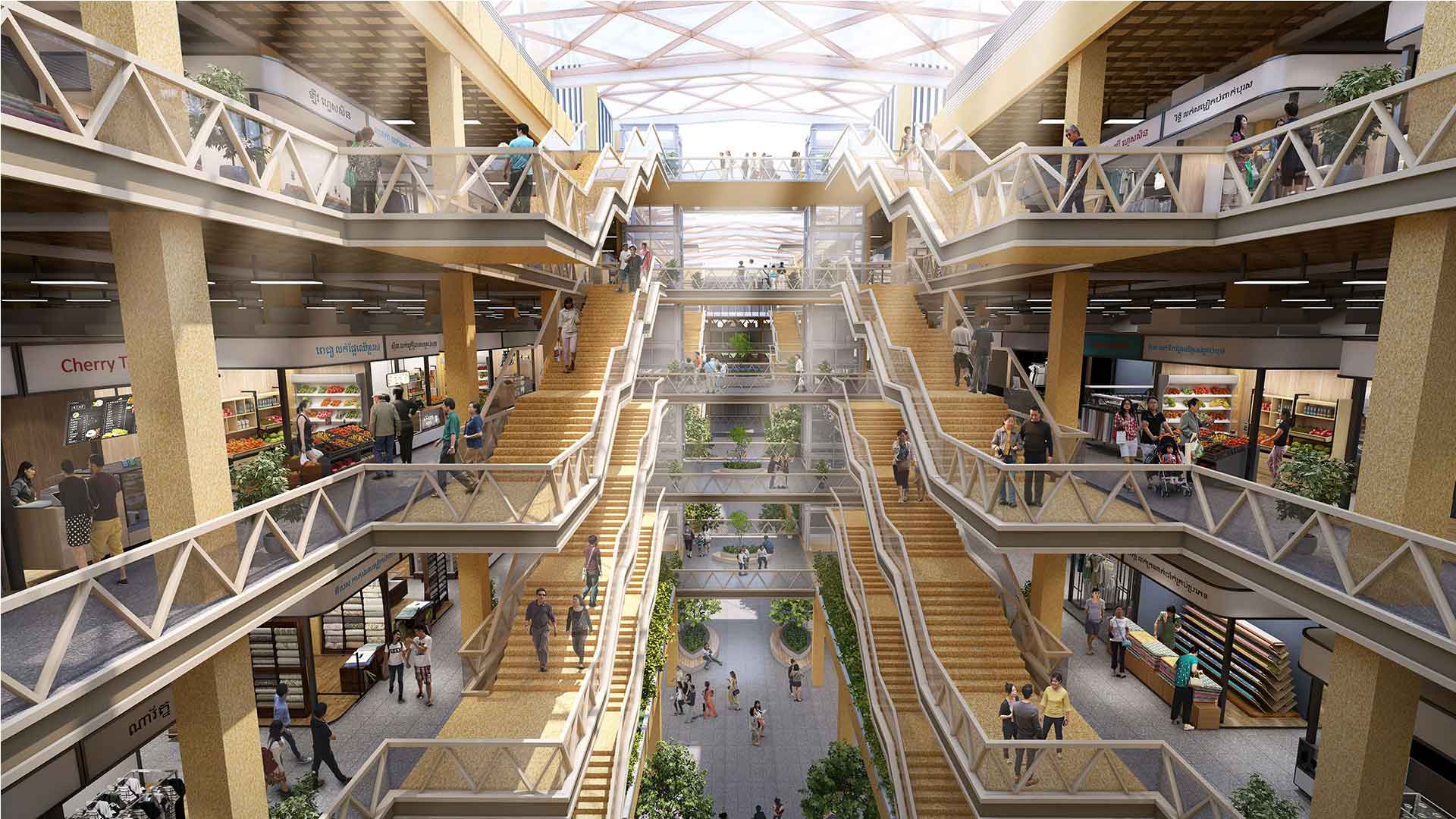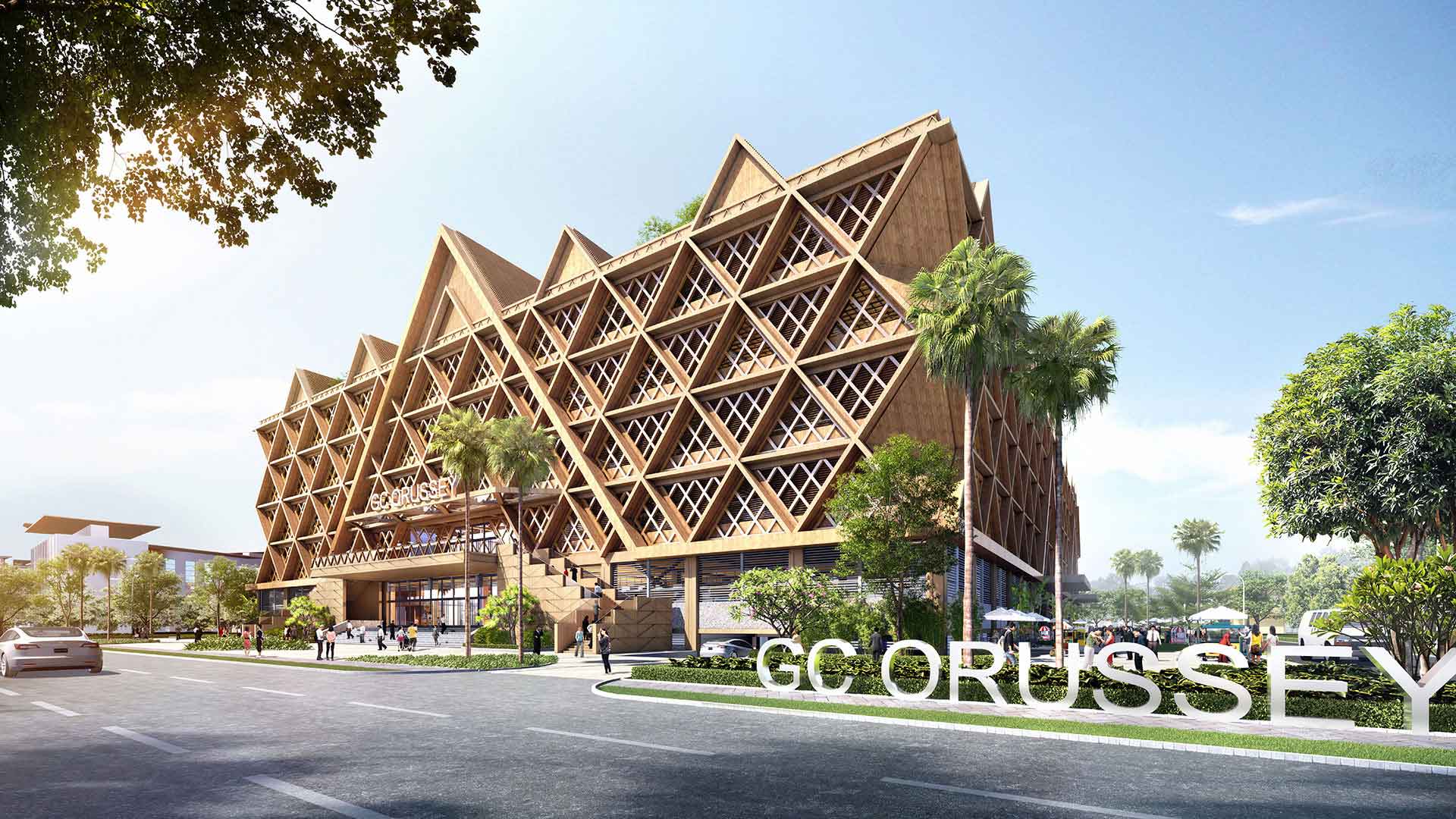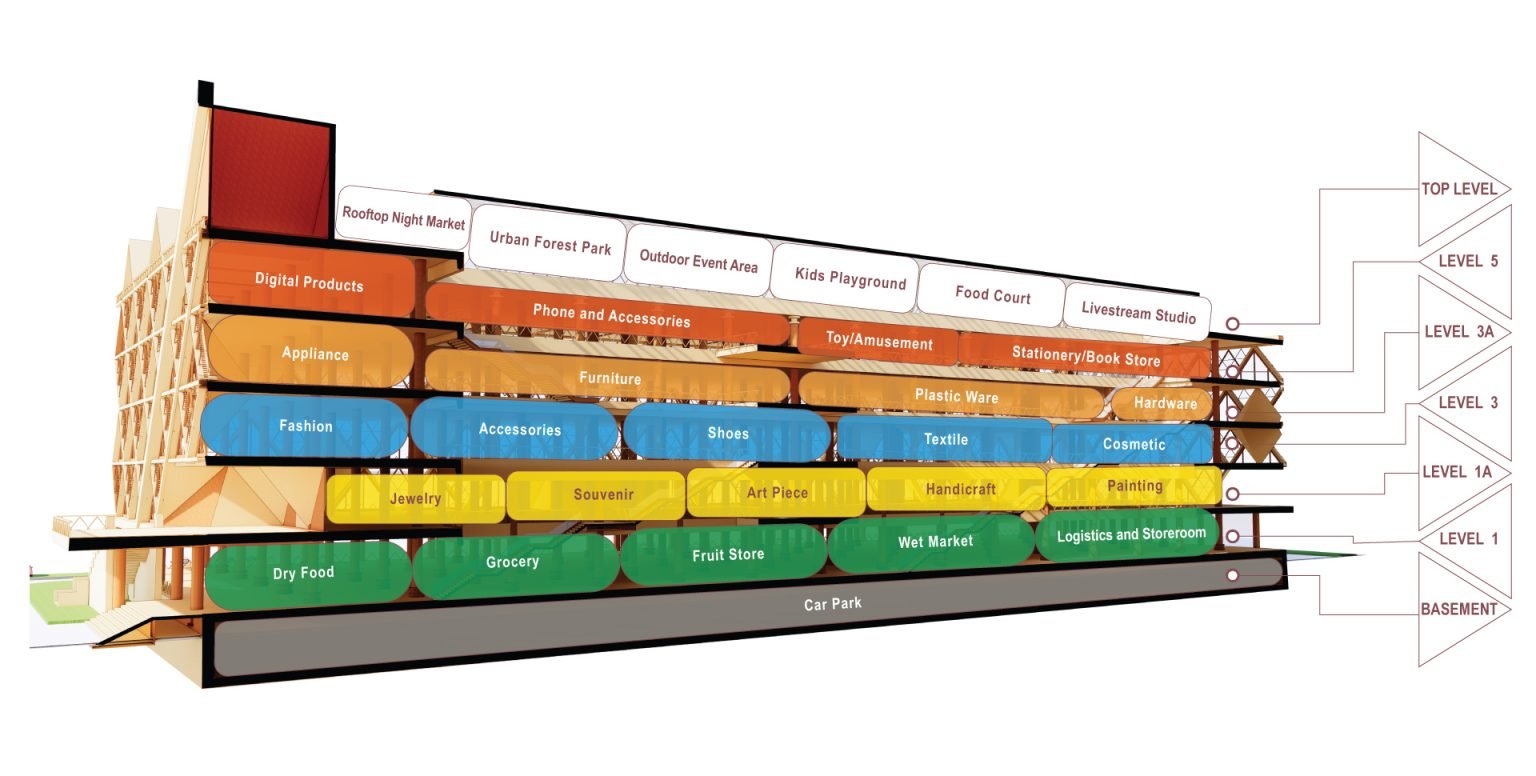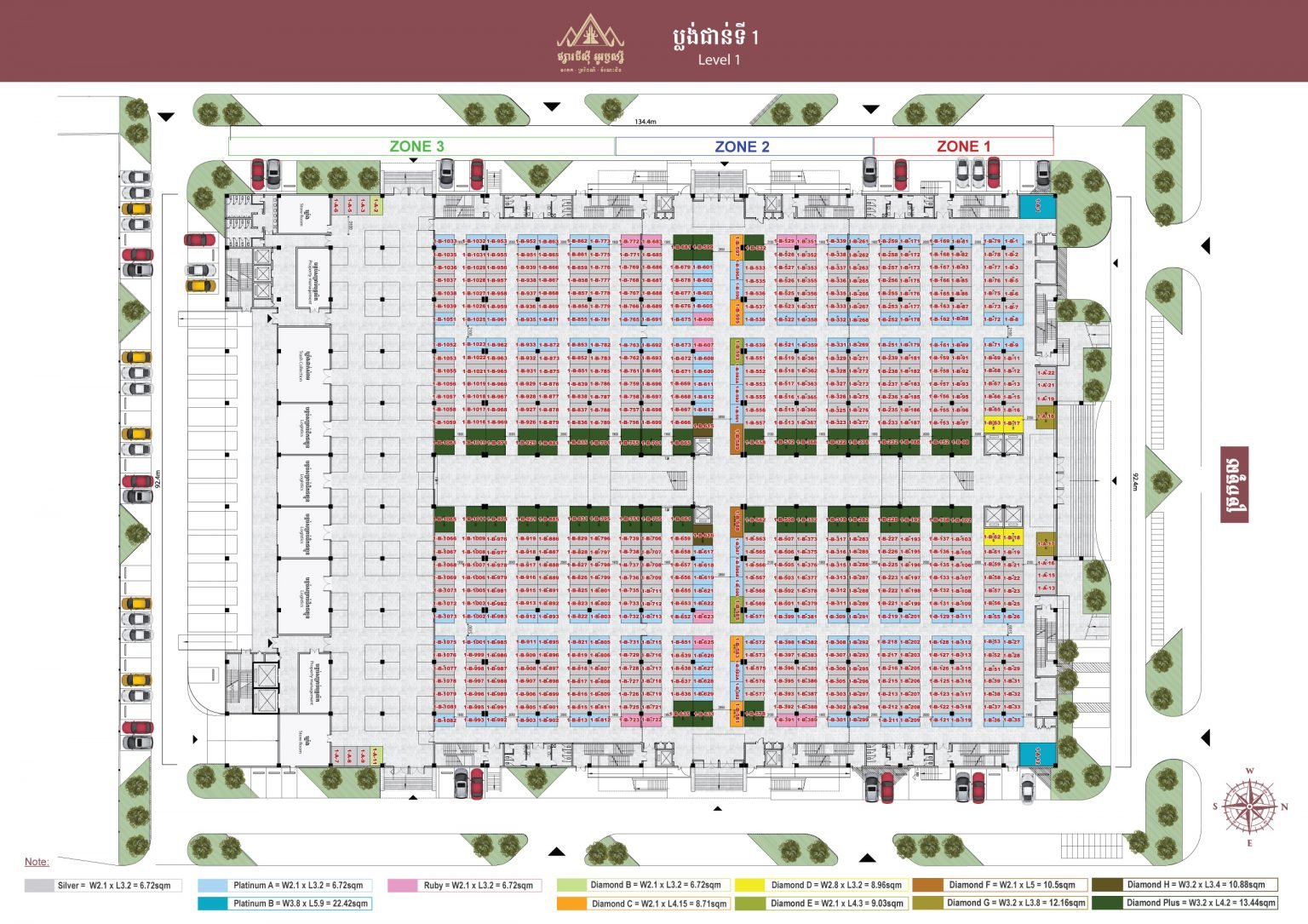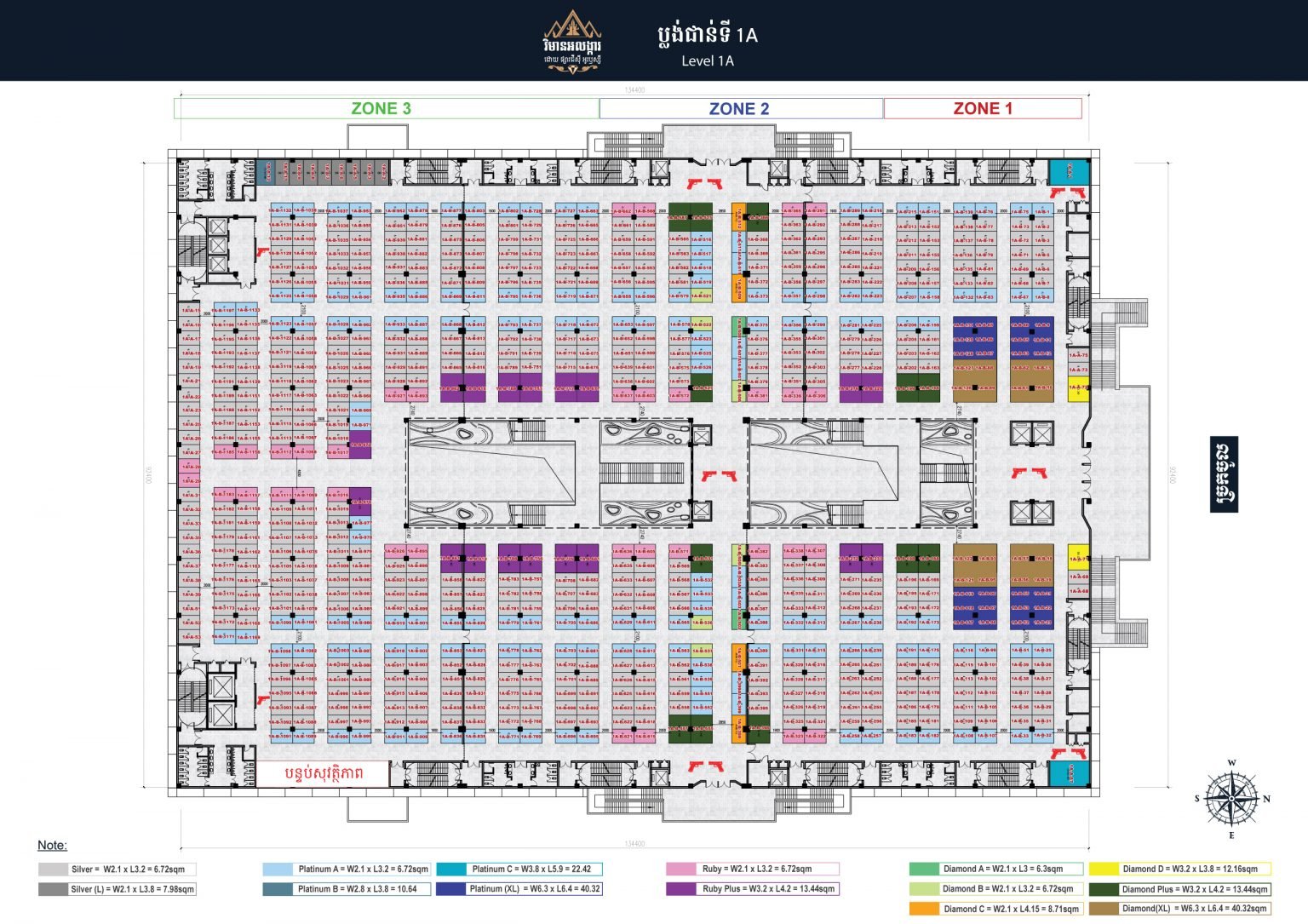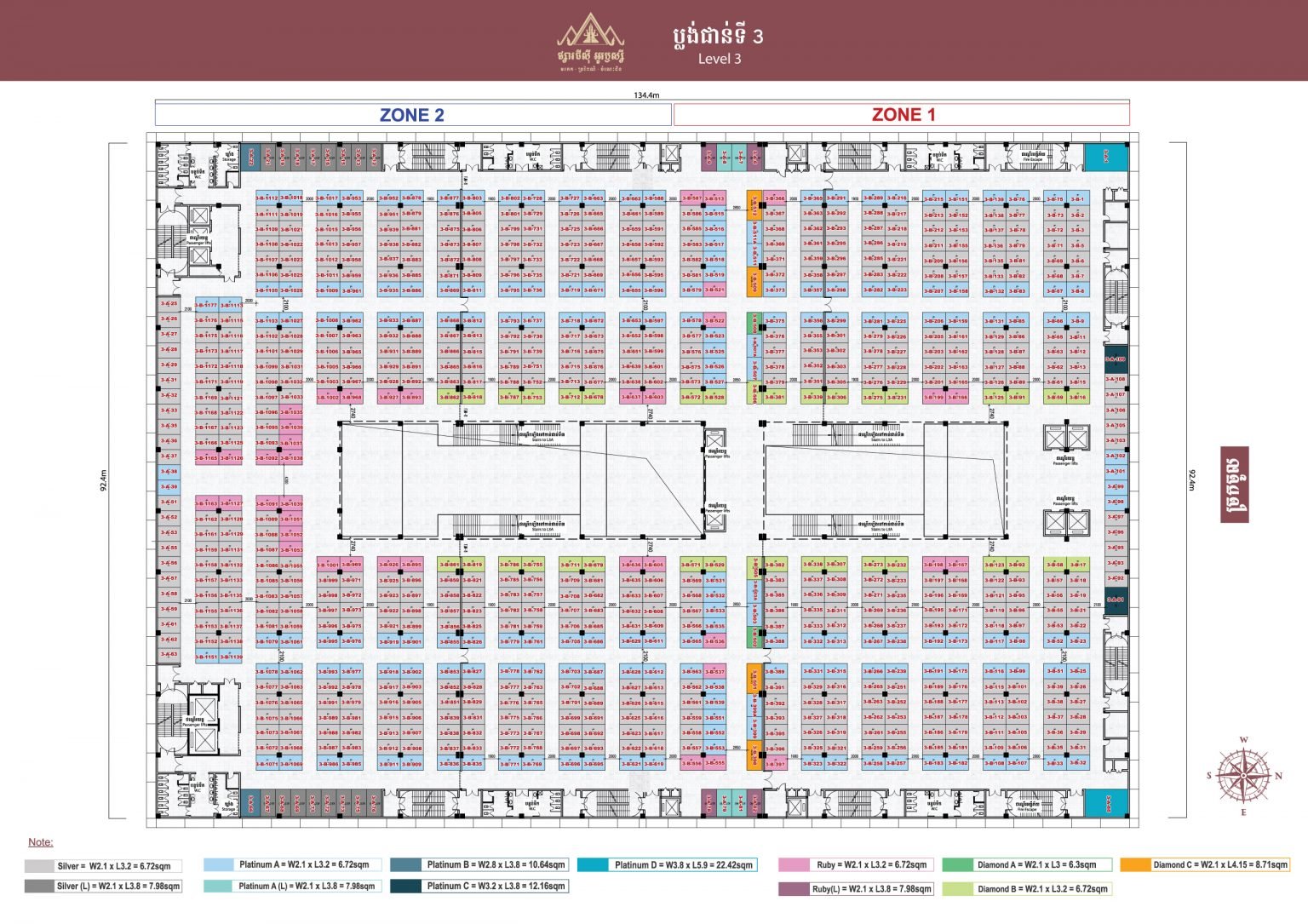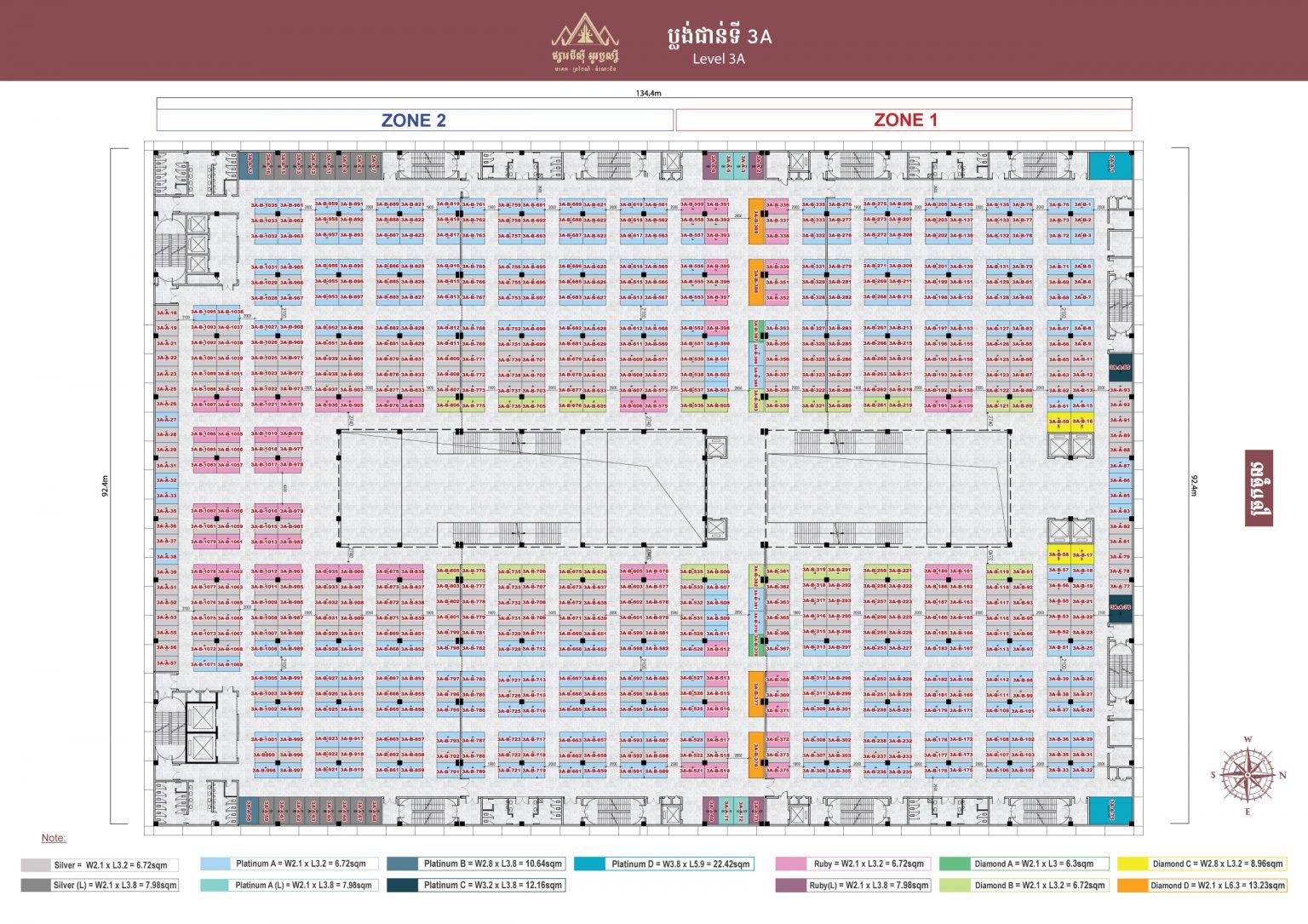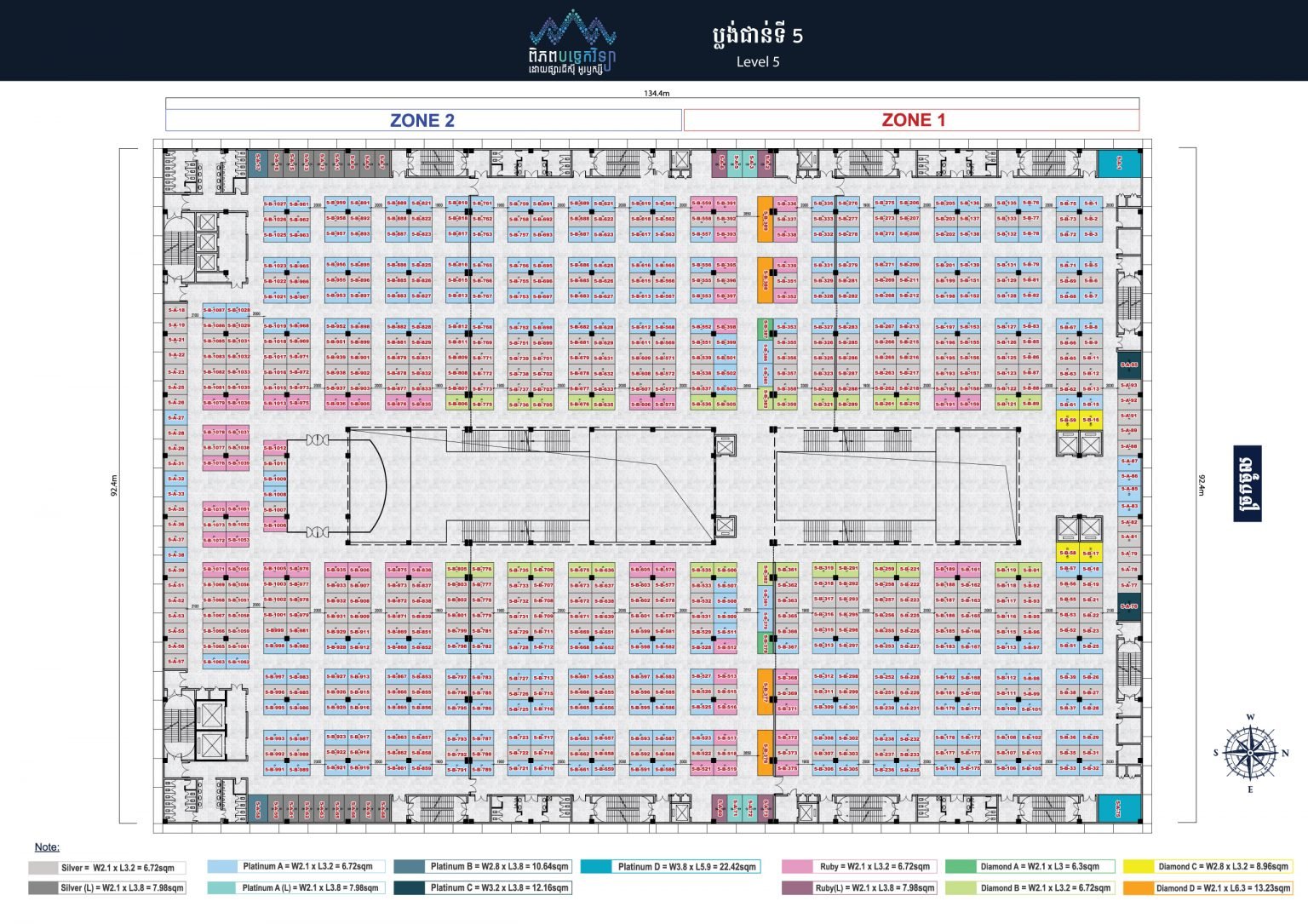GC Orussey Market is a 6-storey wholesale market that is designed in a thoughtful way to dedicate each storey to a particular theme like grocery, jewelry, fashion, souvenir, electrical appliances, etc
GC Orussey Market has inherited traditonal Khmer architecture and Khmer ancient trading wisdom. This shall become a Cambodian local wholesale market and a tourist hotspot. It serves as an extension of existing Orrusey Market.
With a postmodern approach to ancient Khmer architecture, GC Orussey Market is not so much a singular style but an amalgamation of styles that borrowed from history, adapted to the urban context while embracing tradition.
We aim to make GC Orussey Market a vehicle of cultural expression. Simply because we know how “Inheritance” matters.
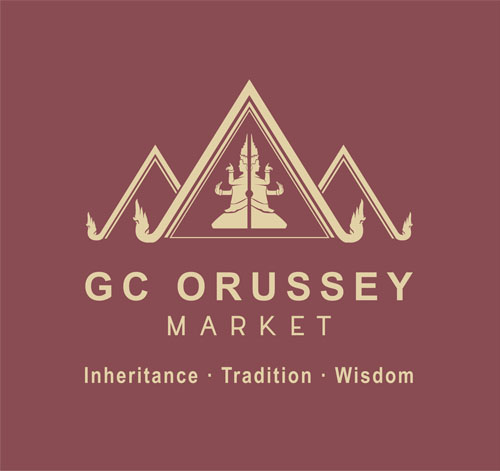
Our logo is designed with three tower surrounding Apsara which represent our slogan “Inheritance · Tradition · Wisdom” while our core value is “Inheritance”.
GC Orussey Market is not just a wholesale market, but a landmark of the valuable possession of Cambodian. We carry the belief, characteristic, and the feel of culture from the past to modern days. We are certain that each one of us can pass down the knowledge, business, and commitment to the next generation.

A look at Cambodia
Local markets are an important part of every Cambodian’s daily life. The capital city Phnom Penh is peppered with markets large and small at almost every corner, with traders selling food, groceries, and sundry items.
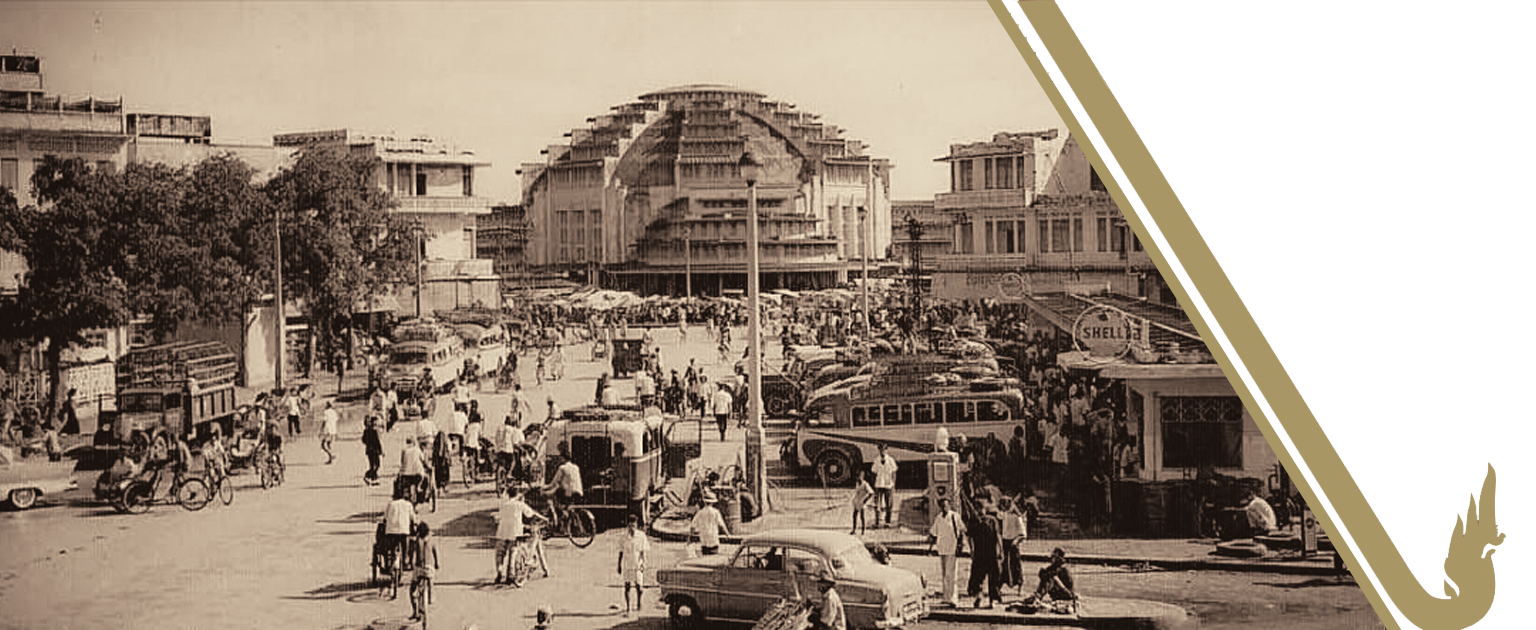
1937
Central Market, an Art Deco market was built during the French colonization.
1980
Phsar Tuol Tom Poung was built and gained popularity amongst Russian expatriates.


1990
Orussey Market was built to support the growing population. The marketplace is well-known locally for its huge variety of goods and services.
2021
As the population growth of Phnom Penh is constantly increasing, the people’s needs for clean, modern, and convenient markets are also increasing.

A Look at The Man Who
Built Cambodia
Mr Vann Molyvann was born in Kampot province in 1926. In 1946, he was awarded a scholarship to France. He studied architecture along with other arts at Paris’ Ecole Nationale Supérieure des Beaux-Arts (School of Fine Arts) and returned to a newly independent Cambodia in 1956.
All of Mr Vann’s buildings were built with climate-adapted designs. He designed raised buildings to enhance natural air flow, while using full-height windows and filtered light to temper the scorching heat of the Cambodian sun. Water is also a recurring design element with the most significant example of directing rainwater into a basin beneath the indoor National Sport Complex for cooling effect.
Mr Vann won the Nikkei Asia Prize in 2013 in recognition of his hard work in preserving Cambodian culture and heritage.
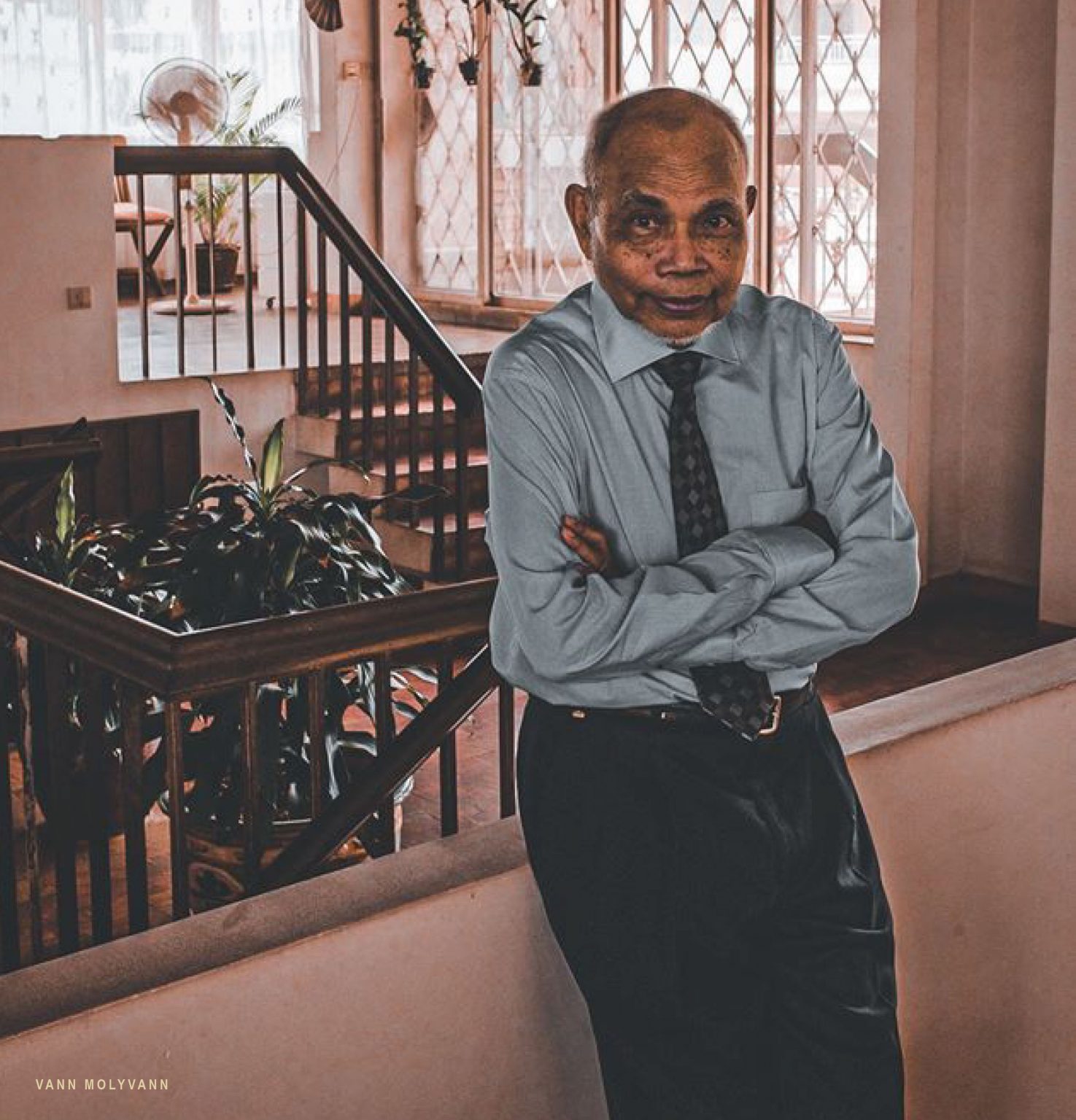
From 1956 to 1970, Mr Vann Molyvann completed more than 100 projects, including the construction of his personal residence in 1966. Known as “New Khmer Architecture”, Mr Vann’s style is a distinctive blend of traditional Khmer design with modenist principles. He is Cambodia’s first qualified architect.
Notable projects of Mr. Vann which remains till today, included Chaktomuk Conference Hall, Independence Monument, Institute of Foreign Languages, Phnom Penh Olympic Stadium and Royal University of Phnom Penh Main Building.



Floor Plan
The Gallery












